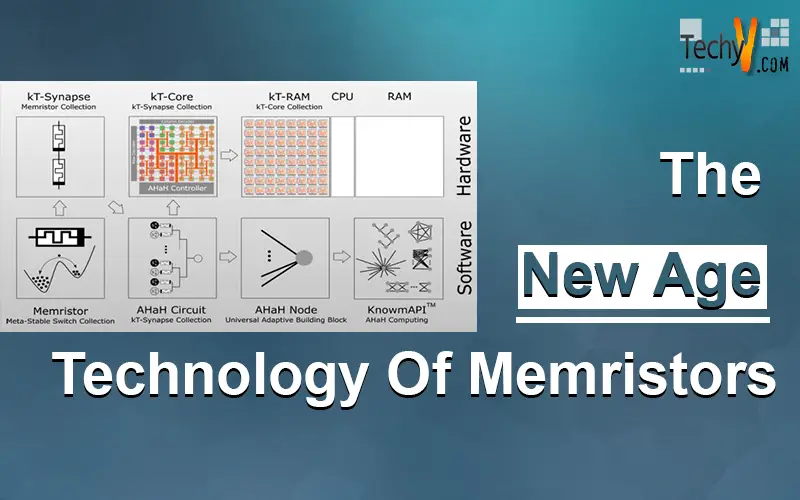Memory has always been an integral part of our computers. The invention of first ever computer ENIAC was a miracle in itself. It consisted of thousands of octal-based radio vacuum tubes to store that data. But it was only capable of performing simple calculations, and that clearly wasn’t enough.
Thus for performing heavy computations and having better storage in devices, developers came up with delay line memory. Which further lead to the development of William tube, Selectron tube, magnetic core memory and then RAMs. But that couldn’t fulfil the need for faster and more secure computations.
The memory devices are still prone to slow performance, bugs or an even virus. To resolve this problem computer and electronic engineers have been working hard by doing better memory management and doubling transistor per square inch.
But is that enough? Can just memory management and transistors be sufficient for our next generation interactive computers? The answer is obviously no.
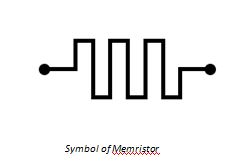
To find the solution, in 2008 a team at Hewlett-Packard Labs rediscovered the Leon Chua’s invention. They claimed that the 1971s forgotten and imaginary device ‘The Memristor’ might be a real. They realised it after analysing the thin layer of titanium dioxide which acted as a memristor.
According to Chua, The memristor(which is also the short form of memory and resistor)was a hypothetical nonlinear, passive two-terminal electrical component. It linked electric charge and magnetic flux. It is operated in the way that its electrical resistance depends on the history of current previously flowed through it.
As this device remembers its history even if it is turned off, so we can say it is somewhat nonvolatile. To understand the concept in a better way, we can assume, a memristor is a pipe which that carries water.
The pipe’s diameter expands only if water flows in one direction which lets the water to flow faster but contracts if water the water flows in the opposite direction and slows down the flow of water. And it retains its diameter if the water is shut off.
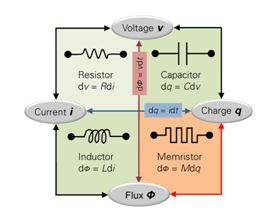
To prove this device exists the team at HP did an experiment. They build a nanoscale memristor switch with dimensions 50 nanometers by 50 nanometers ,it works as follows:
Working of memristor
Memristor is essentially a semiconductor that joins a capacitor, resistor, and inductor whose resistance varies as a function of charge and magnetic flux. The memristance (property of memristor) depends on the magnitude, polarity, and length.
After resistors, capacitors and inductors it is considered as the fourth passive component type. It is assumed that memristor consists of two platinum electrodes. The two terminals have doped and undoped titanium oxide.
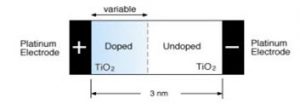
When a voltage is applied across the terminals of the memristor oxygen atoms in the material, scatter towards left or right. The material becomes thicker or thinner depending on the polarity of the voltage hence causing the change in the resistance.
Types of memristor
Even though memristor is an hypothetical device but people are still making assumptions about it’s working by just analysing the material of the memristor. A specific kind of memristor displays a particular behaviour which also might help us to know its applications.
Titanium Dioxide memristor
This is the memristor used by the HP team while analyzing the behavior of the thin layer of titanium Dioxide. They noticed the unusual behaviour of nanoscale materials. This device achieves resistance dependent on the history of current.
The HP device consists of two electrodes with a thin layer of titanium on each side. When an electric field is applied, the oxygen atoms drift hence changing the boundary between the high and low resistance.
Thus the resistance of the film is dependent on the number of oxygen atoms passed through it in a particular direction which can also be reversed by changing the direction of the current. This HP device is considered a nano ionic device which displays fast ion conduction at the nanoscale.
Although the HP memristor is a major discovery yet it has to be tested at practical speeds and densities.
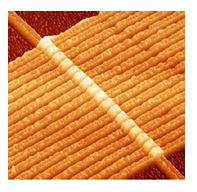
Polymeric memristor
There have been many claims and experiments on polymeric memristor-like in 2004, Krieger and Spitzer explained dynamic doping of inorganic dielectric and polymer. These materials improved the switching characteristics and retention required for the functioning non-volatile memory cells.
Also in 2008,2010 and 2012, Erokhin and Fontana, Alibart, Gamrat and Vuillaume et al also Crupi, Pradhan, and Tozer made numerous attempts to describe various nanoparticle devices.
Spin memristive systems
The mechanism of spin memristive systems is such structures which is entirely based on the electron spin degree of freedom . This allows them to have convenient control. Whenever any external control parameter (such as voltage) is applied, it results in diffusion and relaxation processes causing hysteresis-type behaviour hence the adjustment of electron spin polarization delays.
Spin memristive system was never described in terms of memristive behaviour but instead, the result was deduced in the study of spin extraction at semiconductor/ferromagnet interfaces. In a short period, these structures almost behave as an ideal memristor. Hence results in the expectation of the possible range of applications of semiconductor spintronics.
Layered memristor
Bessonov et al discovered a flexible memristor having a MoOx/MoS2 which is sandwiched between two silver electrodes. This fabrication method is inspired by the printing and solution-processing technologies using 2D layered transition metal dichalcogenides (TMDs). The memristors are optically transparent, mechanically flexible and produced at low cost.
Resonant Tunnelling Diode Memristor
In this memristor, a ‘bow tie’ occurs in I-V characteristics in AlAs/GaAs/AlAs quantum well diodes. And have unique doping design of spacer layers. No magnetic interaction is present in the analysis of ‘bow tie’ V-I characteristics.
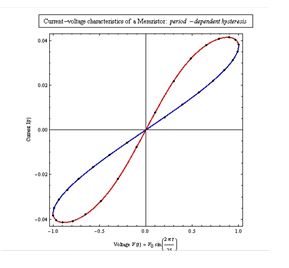
Applications
Ø In non-volatile memory
As memristor can retain the previous data and memory states even in power off mode so it might be the first Non-volatile random access memory. Hewlett Packard developed crossbar latch memory which is reported to have one-tenth the speed of DRAM.
Ø As Crossbar Latches, that will replace Transistor
The excess power consumption of transistors has been a problem for the microprocessor controller and miniaturisation development. In future, solid-state memristors in the form of crossbar latch will replace the transistors in computers.
Ø In Circuits which work same as Neuromorphic and biological systems:
The memristors are expected to help develop the circuit that works like the nervous system of human body. Modelling a brain using ratiocinated mathematics is very complicated. Simple electronic circuits which are based on the memristor and LC circuit are being constucted.
And they are used to experiment on the adaptive behaviour of single-celled organisms. In this experiment, the electronic circuit is subjected to a train periodic of pulses and then learns and predicts the next pulse.
Ø Analog computations and its circuit applications
Digital mathematics and computers raised to dominance as analog computations exhibit a whole area of research.
It was not as, reproducible, dependable, or scalable as digital computations. Because of memristor applications we can now to revisit many analog sciences that we abandoned in the mid-1960’s.
Ø In programmable logic and signal processing
The memristive applications will change the underlying physical architecture hence allowing expanding its capabilities.
Pros of using Memristors
o It consists of the elements that can’t be duplicated by other circuit elements.
o It has the potential to replace hard drives and DRAMs as well.
o It generates less heat as compared to transistors.
o Smaller the size of the memristor better it works, unlike transistor.
o It helped in creating the devices that can store up to 100 gigabytes in a square centimetre.
o It quickly boots up.
o It requires less voltage as compared to transistors.
Cons of Memristors
o It is not available in the market for its commercial use.
o The versions present only have 1/10 speed of DRAMs.
o It might learn wrong patterns in the beginning.
o The rebooting wouldn’t solve any issues as the all the data becomes non-volatile.



